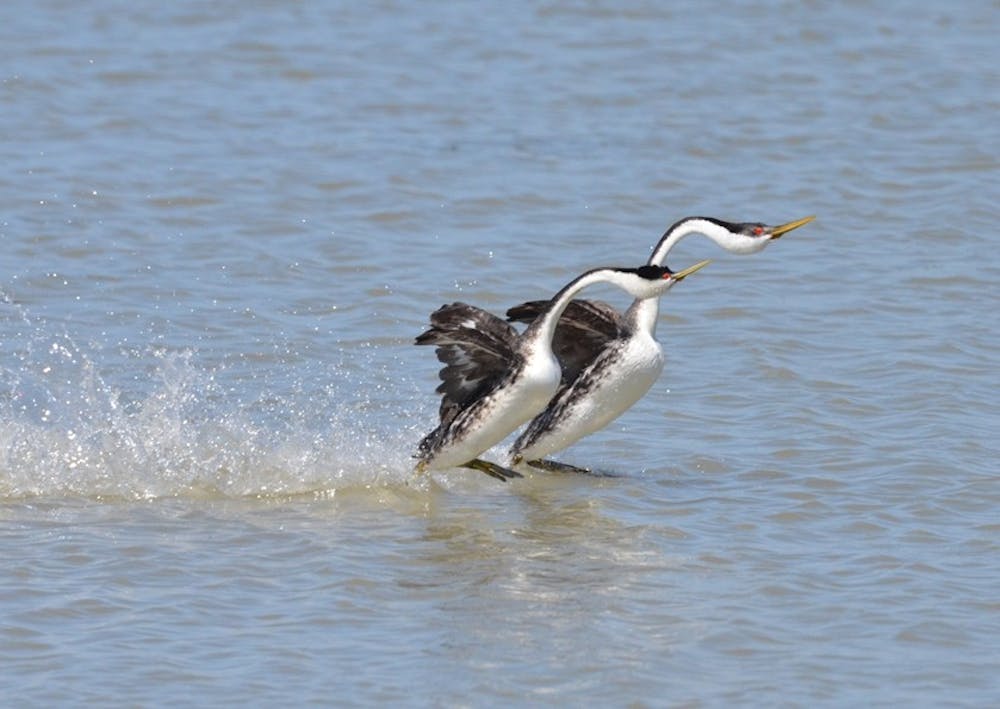While human relations may seem strange enough – confusing and sometimes not-at-all productive – animals also exhibit some interesting behaviors, especially when it comes to mating habits. Bird species, in particular, have some of the most elaborate courtship rituals of any animal.
There is a reason for that: highly selective breeding pressure leads males to work hard to impress their female counterparts – whether through some killer dance moves or by sporting flamboyant garments.
Biologists have long theorized that those behaviors appeal to the female birds’ sensor systems, or demonstrate the males’ abilities to survive and thrive.
In some cases, those courtship rituals can be costly and even risky. Nonetheless, the selection of a qualified partner makes it worth it. Here are a few examples of fascinating shows that male birds put on to attract the attention of females.
The Red-Capped Manakin’s “Moonwalk”
The Red-Capped Manakin is native to Central and South America. It got its name because the males have brightly red-colored feathers on their crown. When the mating season comes, the males will congregate in small groups and occupy a space where there is a branch with optimal visibility.
This is the stage where they will show off their footwork. To the human eye, the manakin’s dance is almost comical: They glide back and forth on the branch, in a move that looks undeniably like the moonwalk.
This dance is also accompanied by sound effects like snapping, flapping and buzzing that the birds produce. It is not yet clear whether those sounds are to intimidate competing males, or to ward off predators.
The Waltz of the Western Grebe
You might have seen a video of two birds waltzing gracefully across the surface of a lake with their wings extended back, chest flared and neck elongated, and possibly dubbed with some sort of peaceful classical music in the background. This is the courtship dance of the western grebe.
To demonstrate their own strength and their fidelity of their partner, the male must “walk” together with the female on water. How do they manage to do this? By slapping their feet frantically.
According to National Geographic, Grebes can reach an astonishing pace of 14-20 steps per second, while humans can only manage about five steps per second. The Grebe is the largest bird known to be able to walk on water.
The Bowerbird’s Love Nest
The Bowerbird lacks elaborate feathers, so it seeks to its craftsmanship and builds a nest to woo the females. The bower weaves twigs into a structure that springs up on the sides, leaving a space in the middle for it to mate.
But it is not quite done right there – it loves home décor too. Blue is the bowers’ favorite color, so the males use anything from rocks to berries to decorate their nest, sometimes even going as far as to pulling of a jewelry heist in the nearby campsite.
Once everything is arranged, the male sings, and if a female comes, they will dance and mate. But that is just as far as the romance goes: once the mating is finished, the female leaves and the male prepares to attract another partner.
The Flamboyant Costumes of the Twelve Wired Bird-of-Paradise
The Bird-of-Paradise, mostly found in New Guinea and Australia, sports some of the most mesmerizing plumage. Indeed, the males look as though they are wearing elaborate tutus.
They have brightly colored and highly elongated feathers that extend from the beak, wings, tail or crown. Unfortunately, those beautiful costumes have made them easy targets for predators and hunters.
The male Twelve Wired Bird-of-Paradise has yellow plumage at the abdomen and the tail. From the rear of these plumes, 12 wire-like filaments extend out.
It is the only bird known so far to have tail ornaments of this type, which are used to tickle the face of a prospective mate. During the display of courtship, the male flare out their wires and sweep them back and forth before the female.





